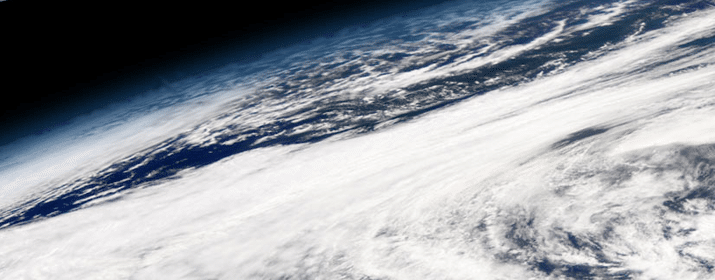There’s real and useful science behind high altitude balloons. From weather research to the development of NASA’s human space program, the technology that StratoStar makes available to Educators on the front lines of research methodology, education pedegogy and has been used by notable scientists and institutions.
High Altitude Balloon and Air Force Daredevil
A very noteworthy use of high altitude balloons was Project Excelsior, a late 1950s effort to develop safe space/flight suits for high altitude aircraft crews (Lockheed U-2 Spy Plane). Testing found that test dummies ejected from high altitudes would spin at nearly 200 RPMs, which would be fatal and could rip a body apart during freefall. 
In order to fully test the suits, they used a high altitude balloon that was 200 feet high with a capacity of almost 3 million cubic feet. It was used to lift a gondola that carried Kittinger into near space.
Kittinger’s first jump (in November 1959) from 76,400 feet nearly ended in tragedy when a stabilizer parachute deployed too quickly. While in his suit, he began to spin at 120 RPMs and lost consciousness, but his main parachute automatically deployed at 10,000 feet, saving his life. Not one to be deterred, Kittinger made another jump three weeks later. This one was from 74,700 feet and was successful, which earned him the A. Leo Stevens Parachute Medal.
Problems were not over for Kittinger, however. His final Project Excelsior jump was from 102,800 feet. Pressurization in his right glove malfunctioned, causing his right hand to swell to twice its normal size. Kittinger fell for a total of four minutes and thirty-six seconds and reached a maximum speed of 614 miles per hour.
The risks and sacrifices made by brave men like Kittinger helped contribute to the numerous successes of NASA and countless scientific advances. NASA would eventually go on to use Kittinger’s research to perfect their own environmental suits and systems to keep their astronauts safe beyond Earth’s atmosphere. Below you can watch a short video on Joe’s expirence with Project Excelsior.



